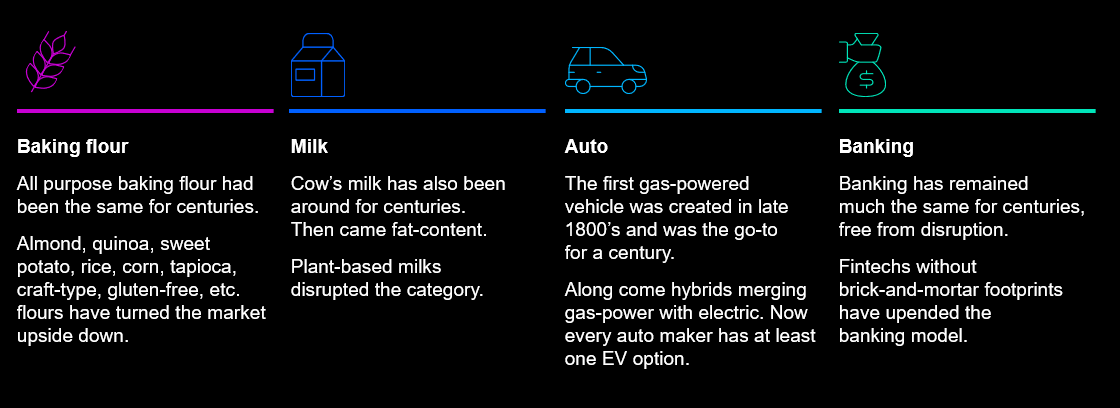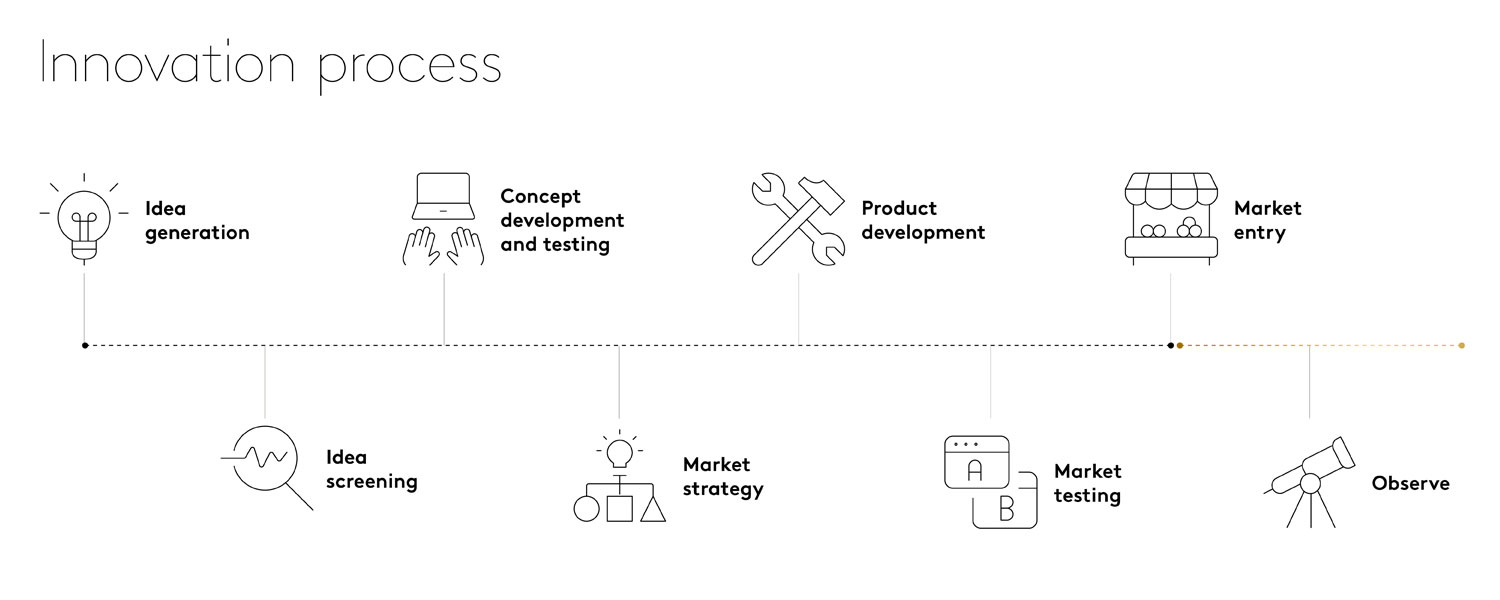In the timeless battle for market share, brands are fighting not only to grow, but to survive. From 2008-2011, after the last great recession, winning brands launched 60% more significant innovations than competitors, and those brands perceived as highly innovative have grown 7x faster than competitors, demonstrating that consumers expect brands to evolve with their changing needs.
This begs the question: how do companies prepare for today’s ever-changing environment?
Innovation could be the key.
According to Harvard Business School professor Clayton Christensen, more than 30,000 new products and services are introduced to consumers every year. Yet 95% still end up failing or falling short. Not all innovation tactics are right for all brands, yet companies need to continuously embrace innovating.
But do you know how to innovate in a way that works for your brand?
We have identified five key innovation steps to use as daily calls to action to optimize your brand innovation strategy and deliver results.
The role of the brand innovation team
Brand innovators are the product team evaluating and accelerating growth of a brand’s current offer, constantly looking to tap into unmet consumer needs. Their main role is to identify relevant innovation opportunities, ways to increase an existing product's value and encourage greater adoption among target users.
Finding the right idea early is the key to innovation success, but what’s the best way to do this?
We know the main role of innovators is to identify opportunities, but creating an effective innovation strategy isn’t always that simple. That’s why Kantar have identified five key innovation steps that should be a part of every brand innovation strategy to help maximize success.
1. Anticipate
With brands constantly competing for consumer loyalty, there is a never-ending need to strategize around “what’s next.” A brand’s innovation strategy should not be centered around one-off business activities but on the constant battle for the next big thing.
As such, it’s not enough to just take the historic view of your data and assume it will predict the future. The speed of change in consumer behavior is simply too fast. Brand innovation teams need to focus on trends and disruptions that represent significant threats or opportunities in the industry.
“But my category has been the same forever.” This doesn’t matter. Milk was seen as an ‘undisruptable’ category, remaining the same for centuries. But innovations involving plant-based dairy alternatives have shown that (almost) no category is ‘undisruptable.’

So, how do you anticipate consumer needs?
Avoid focusing too heavily on what your consumers say on social media. It may be shortsighted as people are better complainers than they are visionaries. Incorporating search data is best practice as it is a better predictor of intent and will help you anticipate change.
2. Prioritize
The next habit brand innovators should incorporate in their strategy is to prioritize the innovations that will help optimize and grow their brand portfolio. Focus on brand-led innovation rather than becoming distracted by micro-trends that do not represent enough sales volume to make a meaningful difference.
Brand innovators should instead identify and focus on the larger, “white space” opportunities, with a laser focus on the opportunity size and competitive landscape.
Remember that consumers do not think in categories, so neither should your brand. Often adjacencies and unforeseen, new entrants to the industry may become your direct competitors.
3. Build
Now you’ve anticipated consumer needs and prioritized key areas for growth, it’s time to build tangible ideas that bring the opportunity to life and are consistent for your brand. Remember: not all trends and movements work for all brands.
Focus on ideas that are relevant while stretching and disrupting category bounds. Use consumers' frustrations as guidelines to develop and expand your brand’s product line and avoid being “safe and simple”. You want your brand innovations and initiatives to stand out from the crowd.
4. Optimize
Once you have learned to anticipate trends and prioritize what matters, it’s important to optimize the ideas and concepts you have come up with. This will help to make sure you’re focusing on brand-led innovation ideas.
Identify what represents the greatest opportunity for your brand and business to delight consumers and continue to build your brand. Throughout your campaign, be prepared to “stage gate” - dividing your plan into distinct phases, separated by decision points and key milestones. This allows you to test and make changes on the fly to optimize for success.
During the innovation process, idea screening, concept testing, and market testing will also help optimize your offerings to match brand and consumer needs.
We’ve developed a ‘Learn. Test. Learn.’ framework fueled by agility to help you with this.
Using this tool, research initiatives that took months can be completed in days or hours; it’s an affordable offering that also delivers accuracy. Plus, our tools work in conjunction with strategic, people-driven expertise, enabling efficient brand innovation that is optimized to your specific needs.

5. Equip
The final innovation step is to ensure that, once you have embedded a culture of agile innovation within your team, you are equipped to act. Tap into self-service tools, such as Kantar Marketplace, that enable you to scale innovation while delivering growth and greater collaboration throughout your organization.

